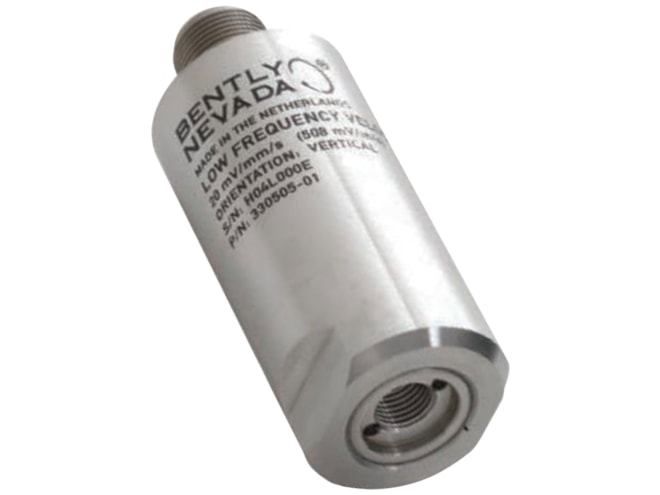The Bently Nevada 330505 low frequency velocity sensor is designed for hydroelectric turbines where slow rotating speeds require detecting a low signal to noise ratio. The sensor detects vibration of the stator core, stator frame, and bearing housing supports. It is designed to provide early warning of pending machinery problems and to help diagnose problems before they become serious.
The 330505 sensor's two-wire design uses moving-coil technology and embedded signal conditioning circuitry to provide a voltage output directly proportional to the vibration velocity. Stator core and stator frame vibration can cause fretting and damage to the winding insulation. To detect these problems before serious damage occurs, a 330505 sensor should be mounted on the outer diameter of the stator core and frame.
Bearing housing vibration can distort levels of vibration measured by shaft-observing proximity probes. To detect premature failure of machine components and prevent significant machine problems, 330505 sensors should be placed in locations that measure both shaft-relative and bearing-absolute vibration signals. Sensors can be mounted to the bearing housing either as a stand-alone measurement or in the same orientation as existing proximity sensors.
The 330505 Transducer connects to the 3500/46M Hydro Monitor, meeting the requirements of International Organization for Standardization (ISO) Standard 10816-5 for mechanical vibration on non-rotating parts in hydraulic power and pumping plants.
Due to the nature of high amplitude, low frequency velocity events, the 330505 sensor is not recommended for automated machinery protection. Due to capacitance constraints, this sensor is not approved for hazardous areas.












